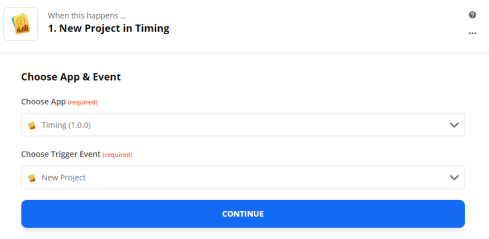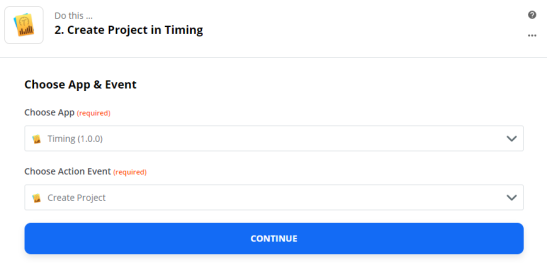How to Manage Your Team’s Projects and Times with Timing and Zapier
Please note: while you can still use the guide below for managing your team with Zapier, we now offer Timing for Teams, which is much more convenient.
Two weeks ago, we explained how you can use Timing with Zapier to streamline your billing process. Today, we will build on these foundations to help you manage your team’s projects and times through Zapier. If you are unfamiliar with the process of connecting Timing to Zapier, have a look at that article for a detailed example.
In particular, you can have Zapier automatically create projects for each of your team members, then send their tracked time to a shared Google Sheet for reporting. That way, you can quickly consolidate your time tracking and billing in one place.
Send Your Team’s Time Entries to a Google Sheet
When you are managing a team, chances are that you want to know what each team member is working on at a given time, and how much time they are taking to accomplish their tasks. This is particularly important if you are running an agency and need to bill your entire team’s time.
This is where Zapier’s Google Sheets integration comes into play. You can use that integration to create a detailed project status report that’s free of errors. And because tasks will be automatically exported to your Google Sheet, you won’t have to copy/paste the data or worry about accidentally changing it.
For this, connect a “New Time Entry in Timing” trigger to a “Create Spreadsheet Row” Google Sheets action, filling the columns with data from the corresponding Timing task.
Note that you will need a separate Zap like this for each team member. Therefore, it might be easiest to share the spreadsheet with each of your team members using Google Sheets’ sharing feature, then have them create the required Zap themselves. You may also want to add an extra “Team Member” column to the spreadsheet, which can be filled with the corresponding team member’s name as part of creating the Zap.
Automatically Import Project Information from Google Sheets for Your Team Members
Chances are that several team members will be working on the same project. Instead of having each team member manually create new projects that you are about to work on, you can simply add them as rows to a Google Sheet, having Zapier automatically create Timing projects for them.
Simply connect a “New Spreadsheet Row” Google Sheets trigger to a “Create Project” Timing action. Similar to the above, we suggest sharing the corresponding spreadsheet with each team member, then having them set up the Zap.
Automatically Create Projects for Your Team Members Whenever You Create a Project
Instead of adding new projects to a Google Sheet, you could also have Zapier create new projects in your team members’ Timing accounts whenever you create a new project in Timing.
This process is a bit more complicated, though, as it involves linking each of your team members’ Timing accounts with your Zapier account. You can follow this process for each team member to accomplish that:
- Have your team member change their password to a phrase they are comfortable sharing with you via our password reset form.
- Use this new password to sign into your team member’s account in the Timing web app.
- Set up a Zap as usual. When Zapier prompts you to select a Timing account, select “Add a New Account” and follow the steps to add your team member’s Timing account to your Zapier account.
- Sign out of your team member’s Timing Web account.
- Have your team member change their password again, this time to a phrase that only they know.
From then on, you can create new Zaps with your team members’ Timing accounts. The following Zap will automatically create a new Timing project for a team member whenever you create one:
- Create a Zap with a “New Project” Timing trigger. Make sure to select your personal Timing account for this step.

- Connect with a “Create Project” Timing action. Make sure to select the team member’s Timing account for this step.

We’re Here to Support You
Our goal is to consistently provide you with new ways to use Timing. With the Timing Web App and the many different Zapier integrations, you now have hundreds of new ways to use and update your Timing data.
If you’d like to see a full list of our available triggers and actions, you can find the full list in our documentation.
